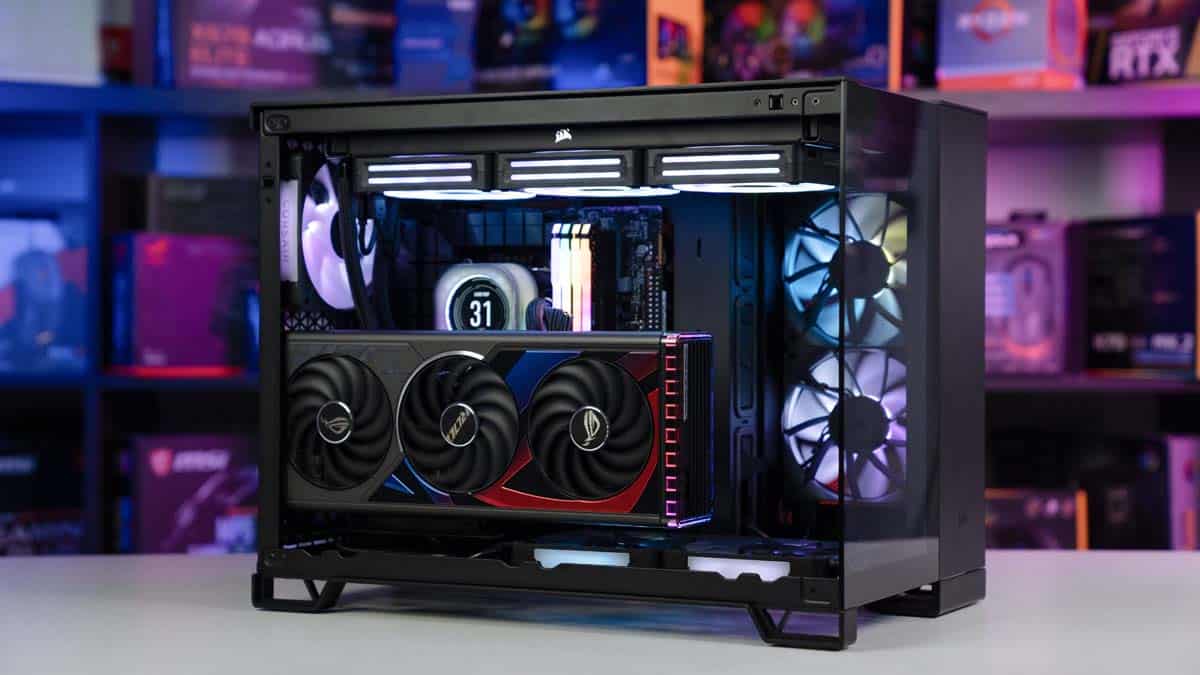What GPU can my motherboard support? –

Table of Contents
When it comes to upgrading your PC’s graphics card, one of the most important considerations is ensuring that the new GPU will work with your motherboard. Incompatible hardware can cause performance issues or even damage your system/component, and we don’t want that. We’ll go over some key factors to consider when determining if a new GPU is compatible with your motherboard.
How do I know what GPU is compatible with my motherboard?
The first thing you need to check is whether your motherboard has a PCIe slot that matches the GPU’s requirements. PCIe (Peripheral Component Interconnect Express) is the standard interface used to connect graphics cards to motherboards. Most modern GPUs require one PCIe slot, a long slot typically with a retention clip on one end – ideally an X16 slot, more on that later.
To check your motherboard’s PCIe slots, consult the manufacturer’s documentation or check the physical slots on the board itself. You’ll need to ensure that the PCIe slot is of the appropriate version and speed for your GPU. For example, if your GPU requires PCIe 4.0, but your motherboard only supports PCIe 3.0, the GPU may not perform optimally because of the bandwidth limitations.
PCIe version is funny
In gaming workloads, sometimes being a PCIe version behind on the motherboard doesn’t matter all that much, but for productivity it can make ah huge difference.
PCIe lanes, what the heck are they?
We mentioned an “X16” slot earlier, and that might be alien terminology to the average user, we’ll do our best to explain what this is in an uncomplicated manner. PCIe lanes are data pathways that connect your computer’s components (like the CPU, graphics card, SSDs, etc.) for communication. They are like roads that connect cities and towns. Typically, the topmost PCIe slot is the X16 slot (usually reinforced with metal)

Each PCIe lane consists of two pairs of wires: one for sending data and one for receiving data. More lanes mean more data can be transferred at the same time, leading to faster communication.
X16 vs X8 PCIe Slots
- X16 slot: This has 16 lanes, allowing the maximum data transfer speed. It’s ideal for high-performance devices like graphics cards that need a lot of bandwidth.
- X8 slot: This has 8 lanes, which offers half the bandwidth of an X16 slot. It’s still fast but not as high-performing for devices that need more data throughput.
In short, the difference is the number of data lanes. An X16 slot offers double the data transfer speed compared to an X8 slot, which can impact performance, particularly for demanding tasks like gaming or 3D rendering when using devices like graphics cards.
If you’re old school and you’re running cards in SLI or Crossfire, then these lanes will be divided equally between both GPUs, making an X8/X8 configuration. There are only so many PCIe lanes that your CPU can assign to GPU data transfer. For optimal performance these days, it’s best to just have one GPU in the X16 PCIe slot.
Power Supply Compatibility
Another critical factor to consider when choosing a new GPU is your power supply’s compatibility. GPUs require a significant amount of power to operate, so you’ll need to ensure that your power supply can provide enough juice to the new GPU.
Check your power supply’s wattage rating and ensure that it meets or exceeds the recommended wattage for your GPU. You’ll also want to check if the power supply has the required PCIe power connectors. Most modern GPUs require one or two eight-pin PCIe power connectors, but some high-end models may require three or more.

If you’re opting for a 40 series or later, then you will want to try and find a power supply on the ATX12V standard, as this will make your life a little easier when building. These GPUs do come with “Squid” connectors that convert PCIe 8 pin to ATX12V, but they are ugly and sometimes unreliable.
“Sometimes unrelaible”
By “sometimes unreliable” we mean documented cases of the connectors melting because they were improperly distributing the load. All of the defective connectors were recalled, and are much better now. That doesn’t mean there aren’t still more out there. But for this reason alone, it’s worth buying a power supply with the ATX12V capabilities already.
How do you tell if a GPU will fit?
When installing a new GPU, you’ll need to ensure that it fits into your case and doesn’t obstruct other components like RAM or storage drives. GPUs come in different sizes, so you’ll need to check the physical clearance in your case to ensure that the new GPU will fit.
You can check the physical dimensions of the GPU on the manufacturer’s website or in the product specifications. You’ll also need to check the clearance inside your case, particularly the length of the PCIe slot and the space between the GPU and other components.

You might have heard the term “triple slot card” or akin floating around, this refers to how many expansion slots the I/O of the GPU uses in your case (how thick the GPU is) so if you only have a small case with 2 expansion slots, then a three slot card won’t fit.
Conclusion
In conclusion, determining if a new GPU is compatible with your motherboard involves checking PCIe compatibility, power supply compatibility, and physical clearance. It’s crucial to do your research and ensure that your hardware is compatible before making a purchase to avoid performance issues or hardware damage. By following these steps, you can upgrade your PC’s graphics card with confidence and get the best performance possible.
